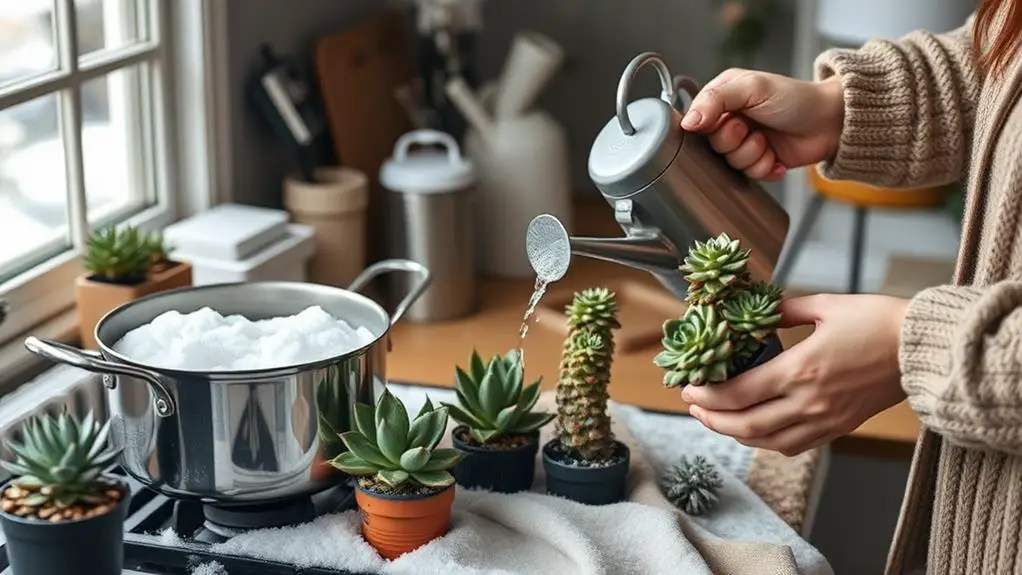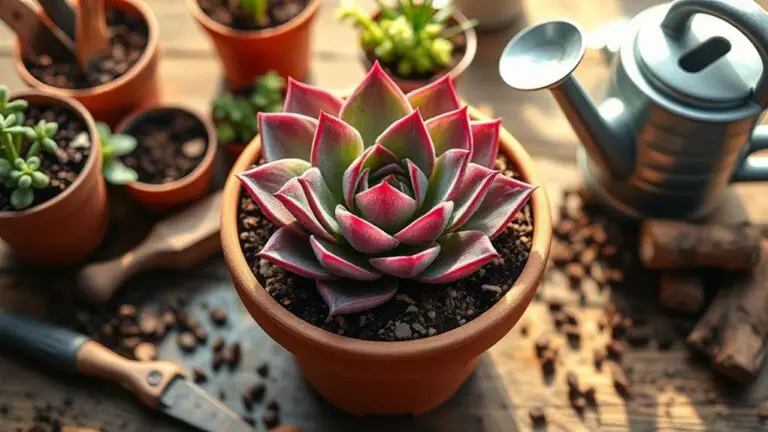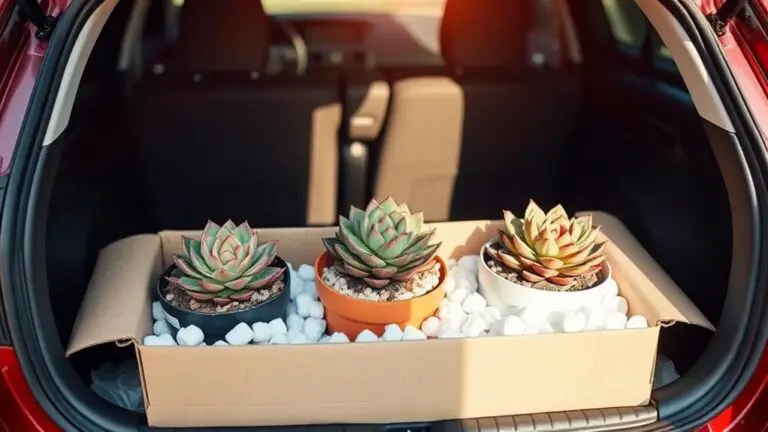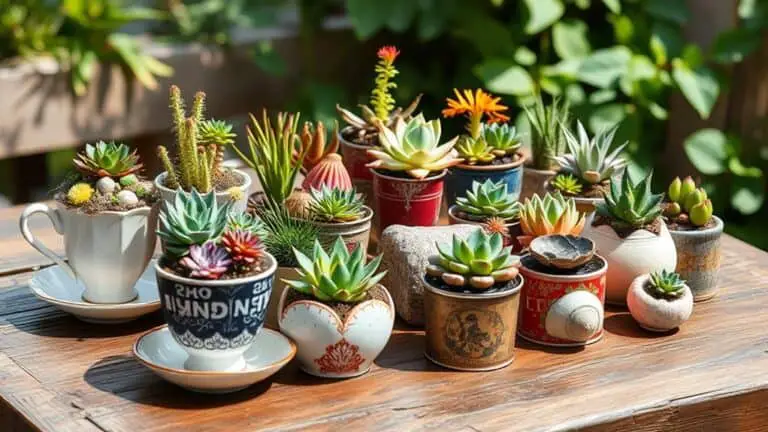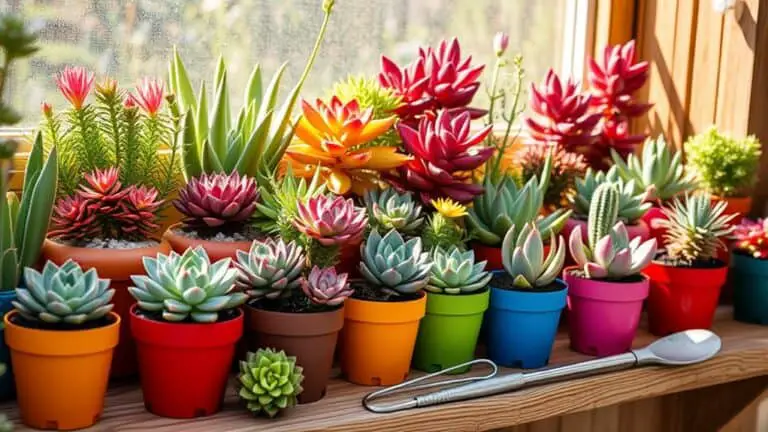5 Steps to Water Succulents With Melted Snow
If you're looking for an eco-friendly way to water your succulents during winter, using melted snow might be the perfect solution. First, you should gather clean, uncontaminated snow from untouched areas. But that's just the beginning. Melting and preparing the snow properly is essential to guarantee it's safe for your plants. Before you even think about pouring it, you need to check the soil moisture. Wondering how to do all this while maintaining the health of your succulents? Let's walk through these steps so you can make certain your plants thrive even in the cold months.
Gather Clean Snow

When gathering snow for watering your succulents, make certain to prioritize pure white snow that's free from contaminants like road salt or animal waste. This will guarantee that the water is clean and safe for your plants.
You should collect snow from untouched areas, far away from roads or pathways, where the snow is less likely to be polluted.
Using a large, clean plastic bucket helps in collecting snow efficiently. It's manageable for easy transport and storage, which is important for maintaining the quality of the snow.
Always avoid collecting snow that looks discolored or compacted. These signs usually indicate that the snow could contain harmful substances which might hurt your succulents.
After you collect snow, make certain to store it in a cool, dark place. This helps to keep the snow pure until you're ready to melt it.
By taking these steps, you'll be able to provide your succulents with high-quality water. They'll thrive better when watered with melted snow that's clean and free from any unwanted chemicals or debris.
Melt and Prepare Snow
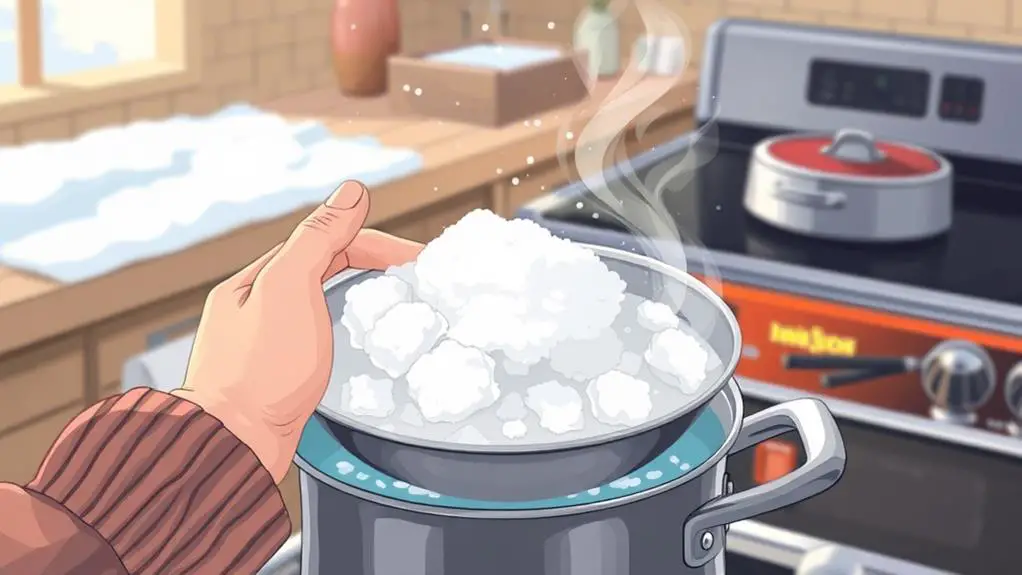
Once you've gathered your pristine snow, it's time to melt and prepare it for your succulents. Start by bringing your bucket of collected snow indoors. Make certain it's clean snow, free from any yellow or contaminated patches.
Place the bucket in a spot where it can melt at room temperature. This helps guarantee the snow melts evenly and doesn't refreeze.
As the snow melts, you'll need to strain the melted snow to remove any debris or impurities. Use a fine mesh strainer or a clean cloth to filter the water. This step is essential to confirm your succulents get the purest water possible, free from any particles that could harm them.
Once strained, store the melted snow in a cool, dark place. This keeps it fresh and ready for when you need to water your succulents. A sealed container works best to prevent any contamination.
Check Soil Moisture
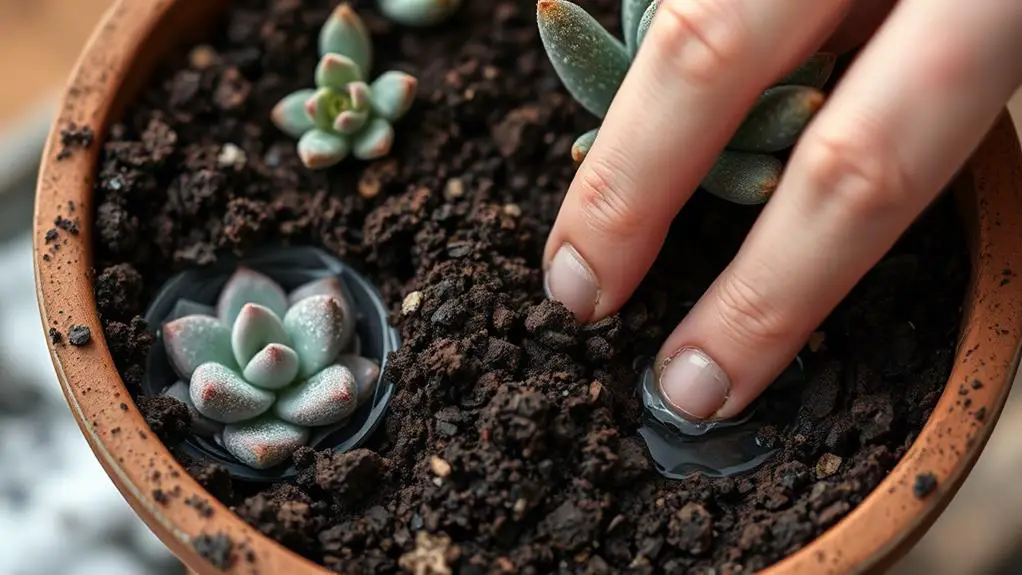
To guarantee your succulents thrive, you must regularly check the soil moisture. Start by inserting your finger about an inch into the soil. If it feels dry, it's time to water them with melted snow.
Succulents prefer their soil to dry out completely between watering sessions. This practice helps prevent root rot, which is caused by excess moisture.
Another handy tool is a moisture meter. It's a great way to get an accurate reading of the soil moisture level. This guarantees you're not overwatering your succulents.
Overwatering can lead to various problems, including root rot and fungal infections.
Keep an eye on the leaves of your succulents, too. Dehydrated leaves are a clear sign that your plant needs water. Look for shriveling or browning, which indicates dehydration.
Water Succulents Gently
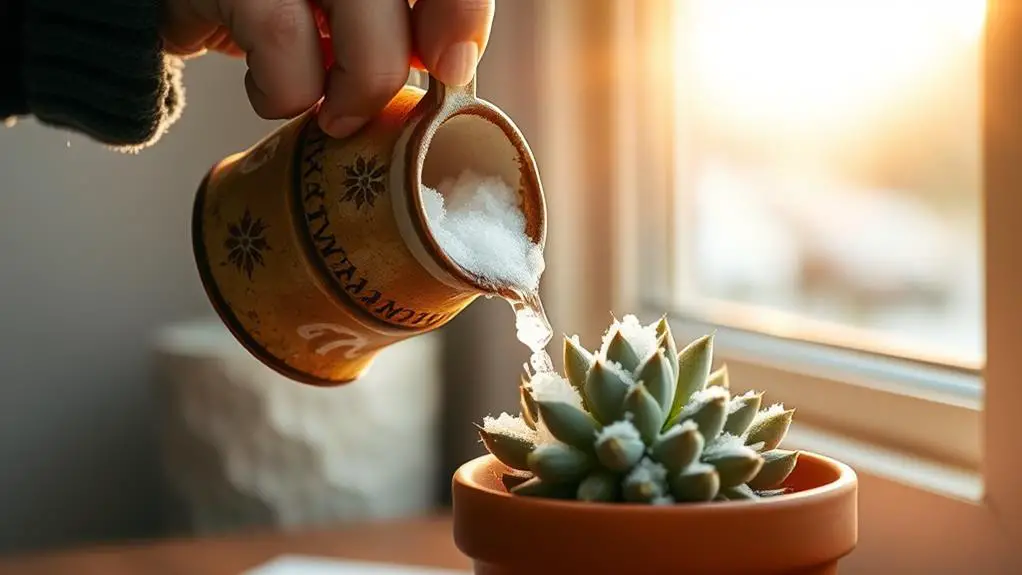
Checking soil moisture is just the first step in guaranteeing your succulents thrive. Once you've confirmed the soil is dry, it's time to water your succulents gently.
Begin by using melted snow that's reached room temperature. Cold water can shock the plants, so let it sit for a bit.
Carefully pour the melted snow slowly around the base of the plant. Avoid splashing water on the leaves to minimize the risk of rot. Using a watering can with a narrow spout or a small cup helps with precision. This way, you guarantee that the water seeps into the soil, reaching the roots without disturbing them.
It's important to control the amount of water you give. Succulents don't like their roots to stay wet for too long, as this can lead to root rot.
Let the soil dry out completely between watering sessions. Keep an eye on the soil moisture to make sure you're not watering too frequently.
Monitor Plant Health
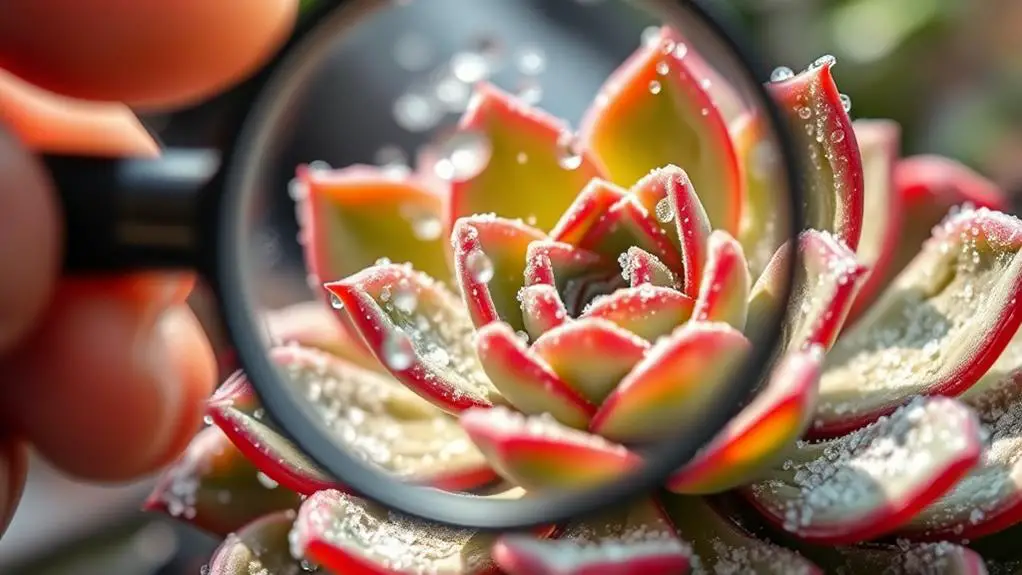
Keeping an eye on your succulent's health is essential when using melted snow for watering. Start by regularly checking for signs of overwatering. Yellowing leaves or mushy stems can indicate that your plant is receiving too much water. This is a common issue, so don't worry if you see it; just adjust your watering routine.
Next, observe the soil moisture level. Succulents prefer their soil to dry out completely between watering sessions. This prevents root rot, which can be fatal to your plants. Stick your finger into the soil up to the first knuckle to check for moisture. If it's dry, it's time to water.
Monitor your plant's growth during different seasons. In winter, succulents enter a dormant phase and require less water. Adjusting your melted snow watering frequency accordingly will help maintain their health.
Keep an eye out for pests or diseases that might arise due to changes in watering practices. These can affect plant health if not caught early.
Frequently Asked Questions
Can I Water Plants With Melted Snow?
Yes, you can water plants with melted snow. It's free from chemicals and contains natural nutrients. Just make certain it's warmed to room temperature to avoid shocking roots, and always use clean, uncontaminated snow for best results.
How Do You Keep Succulents Alive in the Snow?
You should keep succulents indoors during heavy snow, in a bright spot with indirect sunlight. Let the soil dry completely before watering. Use melted snow sparingly and maintain low humidity to prevent rot and fungal issues.
How Do You Water Succulents With Ice Cubes?
To water succulents with ice cubes, place one or two cubes on the soil, avoiding the leaves. The slow melting process guarantees gradual moisture absorption. Monitor soil moisture and water again once the top inch dries out completely.
How Do You Water Succulents in the Winter?
In winter, water succulents sparingly. Guarantee the soil dries out completely between watering sessions. Use room-temperature water and monitor for signs of overwatering. Always water the soil directly, not the leaves, to prevent rot.
Conclusion
You've got this! By following these steps—gathering clean snow, melting and preparing it, checking the soil moisture, watering your succulents gently, and monitoring their health—you'll keep your plants happy and thriving. Remember, patience is key. Don't rush the process and always guarantee the soil dries out between waterings. With a little care and attention, your succulents will flourish. Enjoy watching your green friends grow, and have fun with your gardening adventures!

